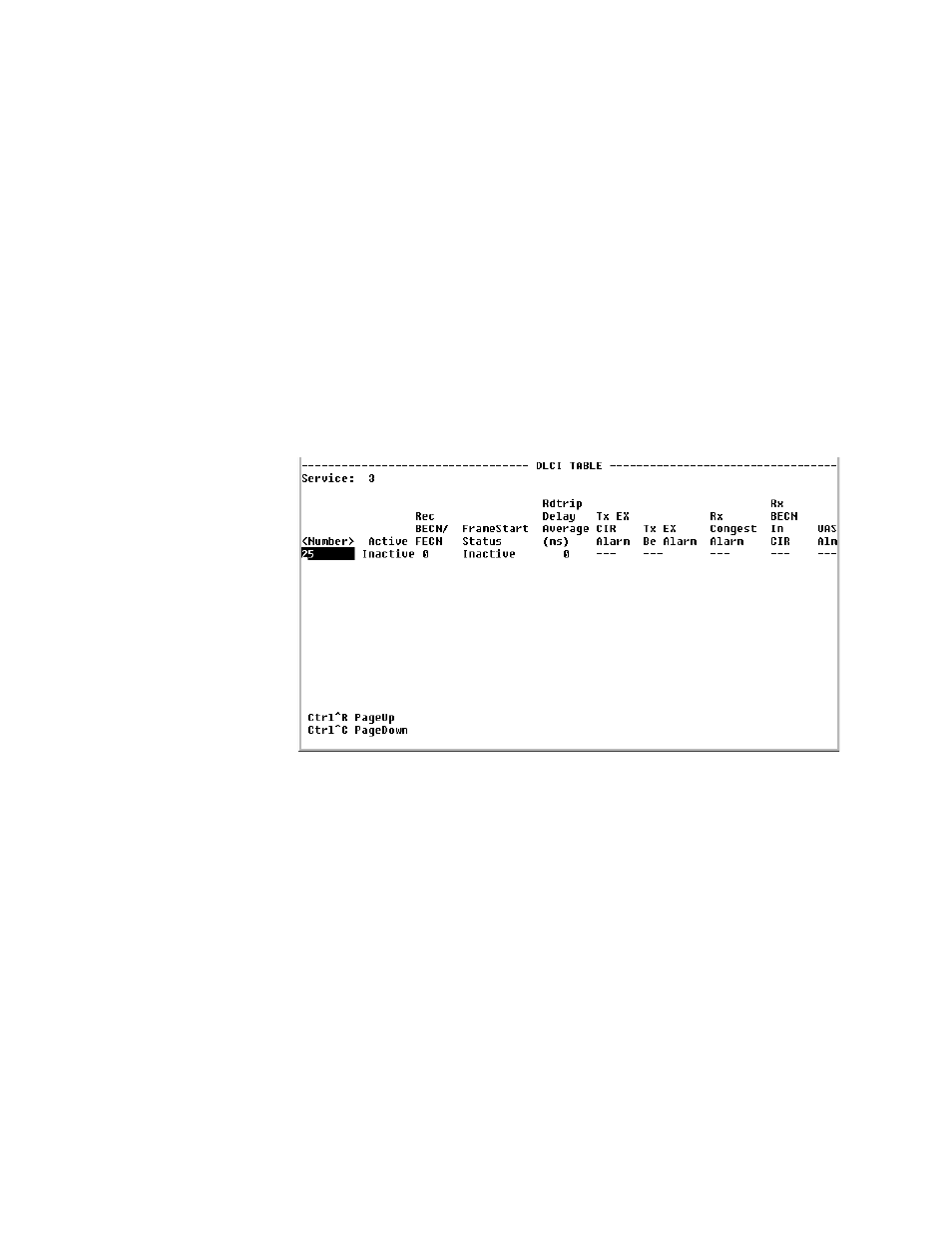Dlci table screen, Snmp details screen, Dlci table screen -37 – Verilink FrameStart FSM (34-00299.E) Product Manual User Manual
Page 111: Snmp details screen -37

V T 1 0 0 I n t e r f a c e
4-37
The DLCI Statistics screen in the preceding figure shows a summary that
includes all 96 buckets. You can choose to see the statistics for any given
bucket by selecting a specific interval under the <Period> column on the
DLCI Statistics screen. The MIB (ipadv2.mib) describes each available
statistic. “FDR” on the screen above refers to Frame Delivery Ratio, which is
the ratio of successful frame receptions to attempted frame transmissions.
“DDR” refers to Data Delivery Ratio or the ratio of successful payload bytes
received to attempted payload bytes transmitted. “DE,” or Discard Eligible,
refers to the data that is first eligible to be discarded when network congestion
occurs.
DLCI Table Screen
You can access the DLCI Table screen from the Frame Relay Service Details
Screen shown on page 4-20. This screen displays a table of all DLCIs on a
specific frame relay service along with their state and alarm conditions.
Figure 4.28
DLCI Table Screen
SNMP Details Screen
The unit detects and reports T1 network alarms and provides several options
for reporting them, one of which is SNMP traps. When a network alarm
occurs, the unit sends a trap message to as many as eight destinations on your
network. The unit will report each alarm by transmitting an SNMP “trap” to
each non-zero Trap IP address.
The SNMP Details screen (Figure 4.29) lets you configure the SNMP
parameters described in the following paragraphs.